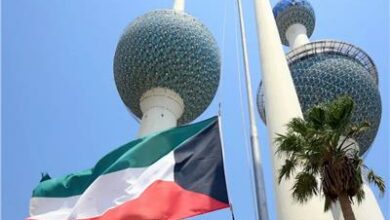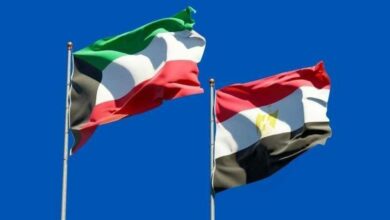When security forces cracked down on a mass protest march in Kuwait on 21 October, Egyptians tweeting under the hashtag “Egyptian advice for the Kuwaitis” sought to share the lessons of their revolution with the protesters. The pointers included ditching galabeyas for pants, and killing all camels to prevent mounted attacks by thugs.
Humor aside, it was clear that Egyptians, along with others in the region, drew parallels between the Kuwaiti situation and the revolutions of the Arab Spring. In the following days, some observers expressed puzzlement at the peace and quiet in the country’s streets. Where had the protesters gone?
This question in fact points to the key difference between Kuwait and other Arab countries that have witnessed mass popular mobilization. There is no Kuwaiti equivalent of Tahrir Square, no critical, sustained push aiming to alter the system once and for all. Rather, the recent events are the latest phase in a protracted struggle between the regime and opposition forces.
Although the influence of regional developments has been marked, the current situation is much more the product of a number of endogenous trends that predate the Arab Spring. Among the most important is the increased prominence of youth in politics.
Today, there exist a large number of Kuwaiti youth groups that have been instrumental in escalating both protest methods and political demands. The roots of these groups lie in the 2006 Orange Movement, a youth-led campaign to reform Kuwait’s electoral districts.
The movement changed the dynamics of the country’s politics through the popularization of social media activism and protest rallies. The site of these rallies, which came to be known as Sahat al-Irada (the Square of Determination), quickly became the destination for all Kuwaitis wishing to air their views, and protesting developed into something of a national pastime.
The Orange Movement youth, initially ridiculed for seeking to challenge patriarchal authority, also cemented their role as the vanguard of political change. Youth groups subsequently proliferated in the campaign to oust the country’s prime minister, launched online by bloggers in mid-2009 and in the streets late in 2010.
A second deep-rooted trend that lies at the center of Kuwait’s protest movement is the increasing assertiveness of Kuwait’s tribal Bedouin. Although much has been made of the Islamist role in the opposition coalition, it is the tribes that now form its backbone. This marks a stark shift in the orientation of this constituency, which has historically had close ties with the ruling family.
In the 1960s and 1970s, thousands of Bedouin were naturalized to bolster the loyalist camp in parliament. Gradually, however, patron-client ties between the regime and the tribes eroded. The latter grew more independent and politicized, and began to speak out against what they perceived to be unfair treatment by the state and widespread corruption.
The 2008 parliamentary elections vividly marked the downturn in relations between the two sides. When the government moved to prevent the holding of illegal but long established tribal primary elections, a series of clashes between riot police and tribesmen foreshadowed the recent confrontations. The emir’s amendment of the electoral law, which sparked the recent protests, is widely seen as an attempt to reduce the representation of the large tribes in parliament.
The attribution of Kuwait’s protest movement to pre-existing developments does not negate the significant impact of the Arab Spring, which has made itself felt in two main areas.
The first is the scale and nature of the protests. Whereas the first Orange Movement protest was 500-strong, attendance at the November 2011 rally that brought down the prime minister was estimated at more than 50,000. Many argue that the last protest march surpassed these numbers, with the opposition claiming a turnout of 150,000.
Another novel development is the transition from localized rallies in al-Irada to protest marches in the commercial heart of Kuwait City, an area that has not witnessed such activity since the Nasserist fervor of the 1950s. The regime has made it clear that it regards the latter behavior as a threat, which partly explains the repression meted out against the protesters.
The second shift that can be attributed to the Arab Spring is the sharp escalation in demands and rhetoric. Calls for an elected prime minister and cabinet in Kuwait would have been laughable a few years ago.
This demand was first put forward by certain youth groups last year in the context of the movement to unseat the prime minister, and was broached in parliament by Islamist MPs not long after. It is now the stated goal of the National Front for the Defense of the Constitution, of which the majority of opposition factions are members.
The most recent evolution in the rhetoric of the opposition has pushed the boundaries even further. Prior to the latest protest march, a number of rallies were held where former MPs directly criticized the emir, who is inviolable, according to Kuwait’s constitution. By far the most daring was Musallam al-Barrak, from whose speech the protesters derived the slogan “We won’t allow you,” in reference to the emir’s intention to amend the electoral law.
While the Arab Spring has added a new intensity to Kuwait’s politics, it remains to be seen to what degree their basic dynamics will be altered. Those expecting revolutionary change, however, should not hold their breath. The struggle between regime and opposition, which will now focus on the latter’s boycott of the upcoming parliamentary elections, looks set to continue indefinitely.
Talal al-Rashoud is a PhD candidate in history at the School of Oriental and African Studies.
This article was originally published in Egypt Independent's weekly print edition.



